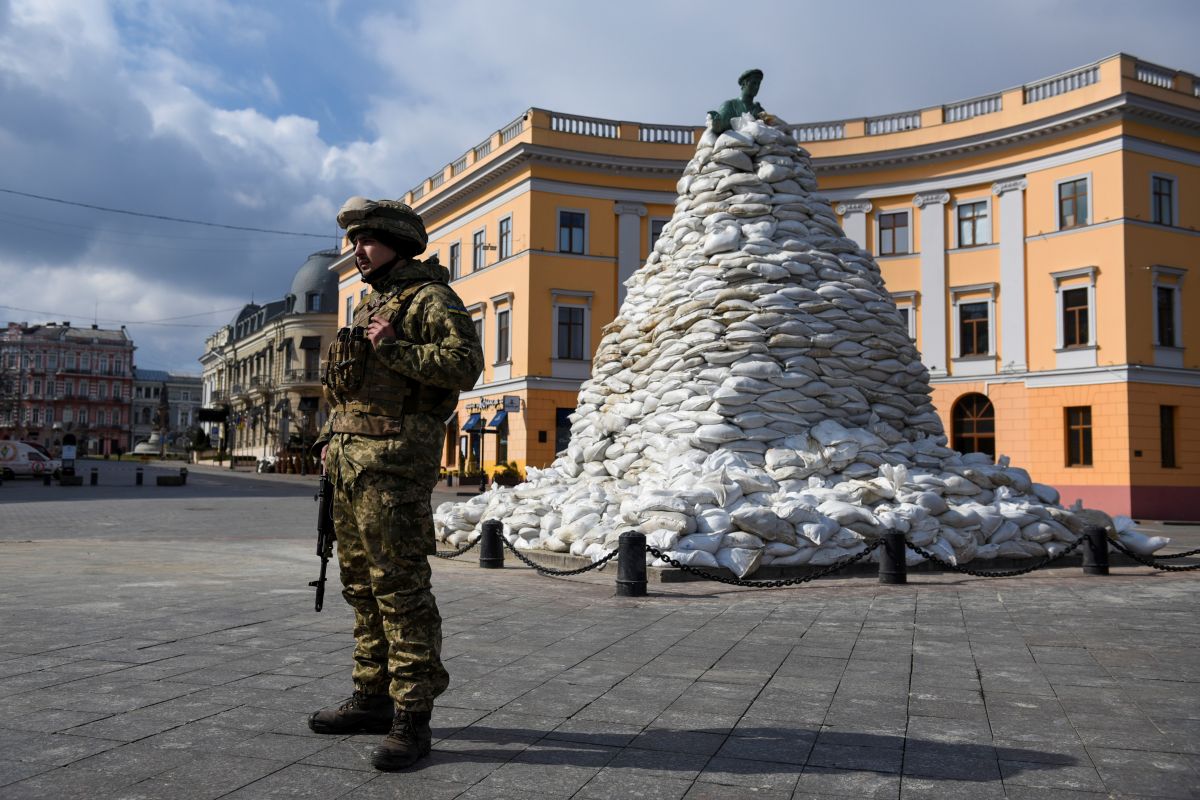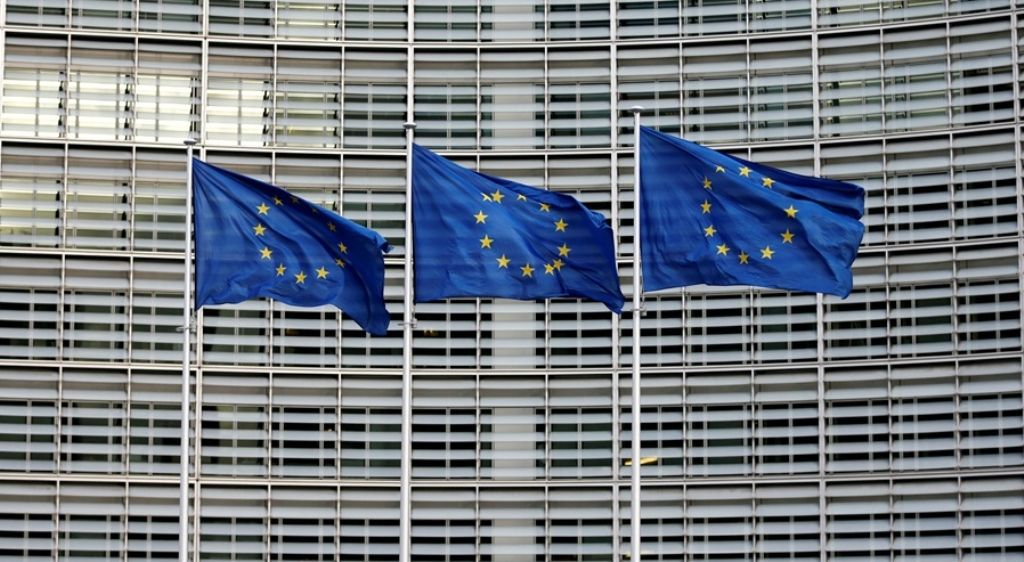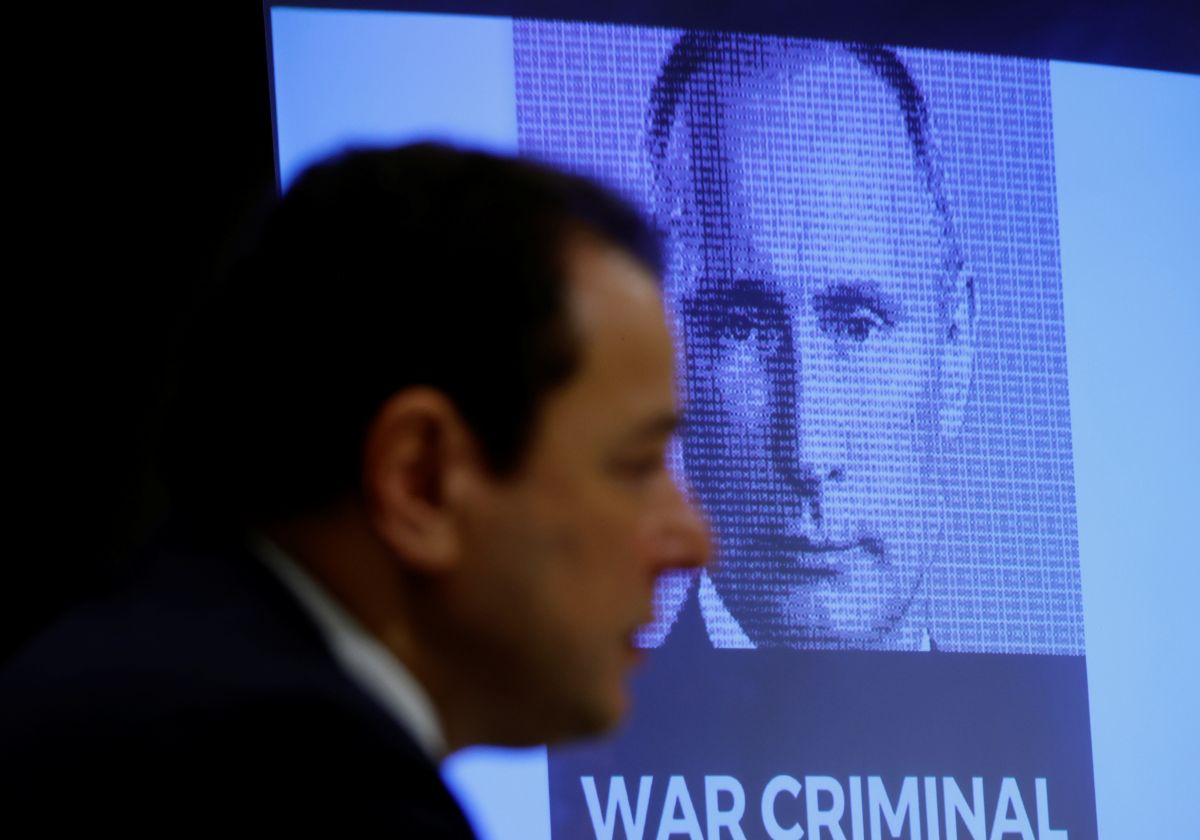Russia's Aggression Against Ukraine and the Threat to Cultural Heritage
The shelling and bombing of Ukrainian cities threaten the cultural heritage of Ukraine, including the most important sites inscribed on the UNESCO list. International law provides for the protection of cultural property, and the provisions of the relevant conventions are applicable during this war. Given the scale of the Russian attacks, the international community should join Ukraine’s efforts to preserve endangered assets.
 ALEXANDROS AVRAMIDIS/Reuters/Forum
ALEXANDROS AVRAMIDIS/Reuters/Forum
What cultural assets and world heritage in Ukraine are under threat?
The scale of Russia’s invasion and attacks inside Ukraine, including shelling and bombing of civilian infrastructure, have put Ukrainian cultural and heritage assets in danger. Among them are museums and their collections, monuments, natural and historical reserves, and other objects important to the tradition, history, culture, and nature of the country and world. Seven sites in Ukraine are on the UNESCO World Heritage List., including Pechersk Lavra and the Saint-Sophia Cathedral in Kyiv, as well as Lviv’s Old Town. In addition, the official UNESCO tentative list (candidate sites for inclusion in the main list) includes another 17 sites in Ukraine. Some of them are now directly in the current war zone, such as the historic centre of Chernihiv, the Archaeological Site “Stone Tomb” in the Zaporizhzhia region, Kharkivs Derzhprom, a constructivist-style skyscraper from 1928, or the Askaniya-Nova steppe biosphere reserve in the Kherson region.
What is Ukraine doing to protect its heritage?
Ukraine has taken measures to protect its material culture assets. As far as possible, objects (e.g., free-standing monuments) are covered with fireproof and protective materials, while historical elements and museum collections have been dismantled and hidden in shelters. The Ukrainian Ministry of Culture and Information Policy has appealed to the public not to disseminate information about the methods of protecting museums and the storage places of collections in order to ensure their safety. The ministry has created a special website to document the destruction of cultural heritage. Witnesses to such devastation can submit photographic evidence, which, after verification, is to be forwarded to the International Criminal Court in The Hague. The lack of a reliable inventory of such objects may be a challenge for the protection of the country’s cultural and heritage assets. The Ukrainian State Register of Immovable Monuments of Ukraine includes only about 10,000 entries (less than 10% of Ukrainian monuments were entered into it).
What losses has Ukraine suffered or may have suffered in material culture so far?
In only the first several days of Russia’s attacks, the museum in Ivankiv near Kyiv was destroyed. It contained the works of Maria Prymachenko, an internationally recognised Ukrainian folk artist, representative of a visual art called naïve art. A number of objects in eastern and southern Ukraine were seriously damaged, including Dormition Cathedral in Kharkiv or the historic building of the former Shchors cinema in Chernihiv. The Russian forces have targeted objects in the vicinity of important monuments, including ones on UNESCO’s information list to the warring parties. Russian bombings have destroyed buildings in Chernihiv next to the 11th-century Transfiguration Cathedral. The building of the Kharkiv regional state administration, which is located near Derzhprom, has been ruined. President Volodymyr Zelensky said the historic Babi Yar complex was damaged during the attack on the Kyiv television tower.
What has been the international reaction?
The Russian attacks on the cultural heritage of Ukraine has been condemned by the International Council of Museums and others. Organisations involved in the preservation of historical monuments have expressed concern about the situation in Ukraine (e.g., the International Council for the Protection of Historical Monuments and Sites). Audrey Azoulay, director general of UNESCO, has been calling for the protection of cultural heritage in Ukraine since the beginning of the invasion. The organisation is in contact with the Ukrainian authorities to mark the most important sites with the Blue Shield—the international symbol for the protection of historical monuments during armed conflict. UNESCO, in cooperation with the UN Institute for Training and Research (UNITAR), is monitoring sites threatened or already affected by the Russian attacks to assess the damage. Damage to cultural property may be treated as a war crime, in which case Ukraine will be able to try to bring the perpetrators before the International Criminal Court.
Ukrainian Minister of Culture Oleksandr Tkachenko called on the international community to impose sanctions on Russia in the field of culture and to deprive Russia of its membership in UNESCO. Poland supports his appeal. For example, the 45th session of the World Heritage Committee, scheduled for June this year in Kazan, in southwestern Russia, should be immediately transferred to another country. Ukrainian monuments also deserve to be on the special UNESCO List of World Heritage in Danger. The European Union can contribute to the protection of Ukrainian heritage through the Concept of Cultural Heritage in Conflicts and Crises, adopted in June 2021. Apart from the international community’s pressure on Russia to end the aggression, support for Ukrainian institutions is needed, not only for the protection of cultural assets but also to help with the inventory and photographic documentation. Such an inventory is important, not only because of the potential destruction of these objects, but also because of the obligation to restore pillaged cultural property under The Hague Convention.






